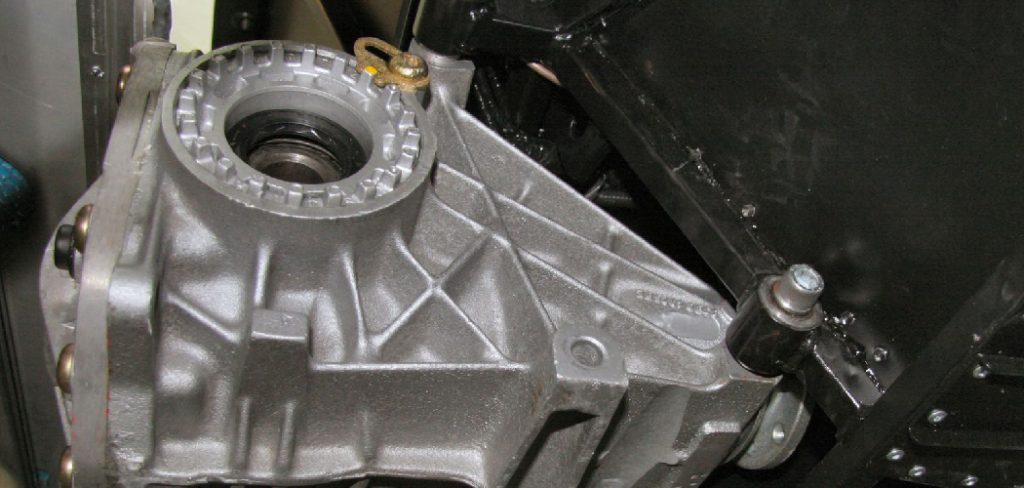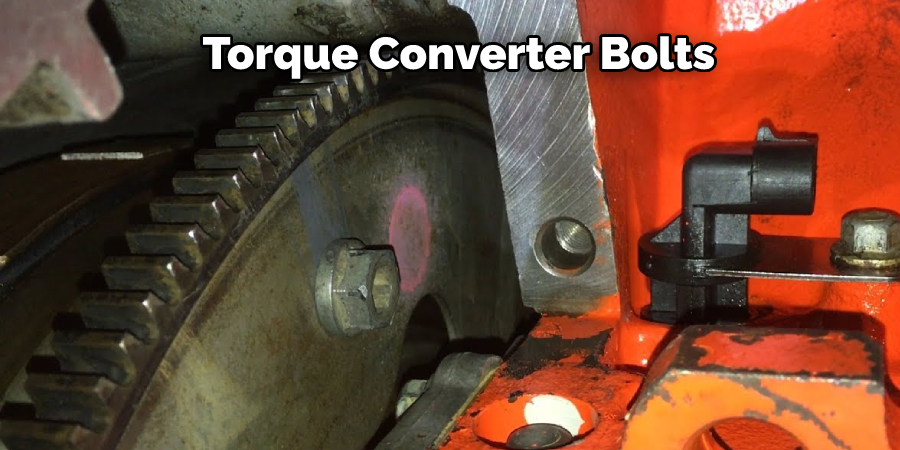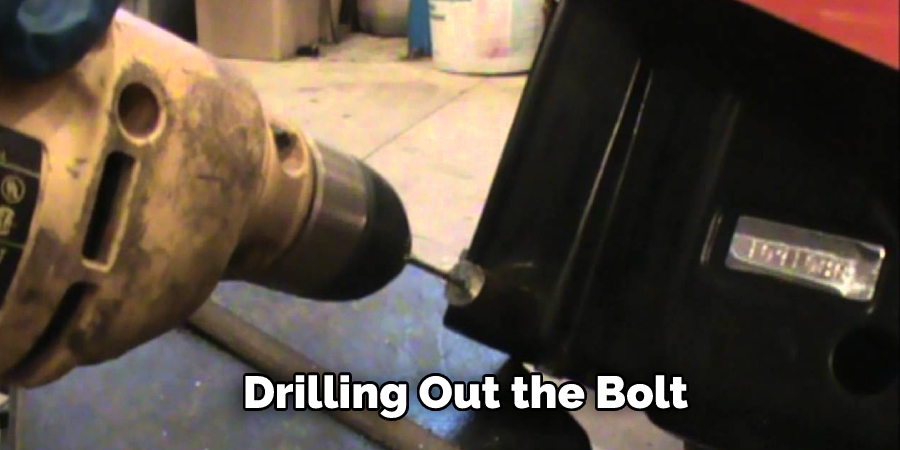Removing torque converter bolts can be a daunting task. In this article, we will show you the best way to remove them so that you can get your car back on the road. We will also go over some of the common mistakes people make when trying to remove these bolts.

So, if you are having trouble removing your torque converter bolts, keep reading! We have all the information you need right here on how to remove torque converter bolts.
Summary: If you’re having trouble removing torque converter bolts, here’s a quick guide on how to do it: 1. Remove the bolts that hold the torque converter in place. 2. Use a Breaker Bar to remove the bolts from the torque converter. 3. Disconnect the hose that connects the torque converter to the engine. 4. Remove the torque converter.
What Are Torque Converter Bolts?
Torque converter bolts are bolts that are used to secure the torque converter to the flexplate or flywheel. The torque converter is a fluid coupling that is used to transmit engine power to the transmission. Torque converter bolts are typically made from high-strength steel and have a black phosphate finish to resist corrosion.
The bolts are tightened to a specific torque value, which is typically between 18 and 22-foot pounds. If the bolts are not properly torqued, the converter can become loose and cause vibration or noise. If the bolts are overtightened, the threads can strip or break, causing the converter to become detached from the engine.
Properly tightening torque converter bolts is critical for ensuring the safe and reliable operation of the vehicle.
Why Might You Need to Remove Torque Converter Bolts?
As anyone who has ever worked on a car knows, many bolts hold everything together. While most of these bolts can be removed with a standard wrench, some require special tools or techniques. Torque converter bolts are one example. These bolts are located in the center of the torque converter, and they are responsible for holding the converter to the engine.

In order to remove them, you will need a special wrench that can reach into the center of the converter. Once you have the right tool, you must apply significant force to loosen the bolts. This can be difficult, but it is usually necessary to perform repairs on the torque converter. As a result, it is important to know how to remove torque converter bolts before attempting any major repairs.
7 Methods to Follow on How to Remove Torque Converter Bolts
Removing torque converter bolts can be a difficult and time-consuming task, but it is necessary if you need to replace or repair your torque converter. There are a few different methods that you can use to remove these bolts, and the best method for you will depend on the tools that you have available and the specific bolt that you are trying to remove.
Methods 1: Using an Air Impact Wrench
One method that can be used to remove a torque converter bolt is by using an air impact wrench. This type of wrench can generate a lot of torque, which can help break loose even the most stubborn bolts. If you do not have access to an air impact wrench, you can try using a regular socket wrench with an impact socket. This method may not be as effective, but it is worth a try if you do not have an air impact wrench.
Method 2: Using a Torque Multiplier
If you are having trouble removing a torque converter bolt with an air impact wrench or a regular socket wrench, you may want to try using a torque multiplier. A torque multiplier is a tool that can be used to increase the amount of torque that is being applied to a bolt. This can often help to break loose even the most stubborn bolts.
Method 3: Using Heat
Another method that can be used to remove a torque converter bolt is by using heat. Applying heat to the area around the bolt can help to loosen it up and make it easier to remove. One way to apply heat is by using a torch, but you need to be careful not to damage the surrounding area with the heat. Another way to apply heat is by using an induction heater, which can be more effective and safer than using a torch.
Method 4: Using Penetrating Oil
If you have tried all of the other methods and you are still having trouble removing the bolt, you may want to try using penetrating oil. Penetrating oil can help to loosen up the rust and corrosion that may be holding the bolt in place. Apply the oil to the area around the bolt and let it sit for a few minutes before trying to remove the bolt again.
Method 5: Using a Hydraulic Jack
If you have access to a hydraulic jack, you may be able to use it to remove a torque converter bolt. First, place the jack under the vehicle and position it so that the ram is pressing against the back of the torque converter. Then, slowly pump the jack until enough pressure is on the converter to break the bolt loose.

Method 6: Using an Extractor
If the bolt is still not budging, you may need to use an extractor. An extractor is a tool that can be used to remove a broken bolt. First, position the extractor so that it is lined up with the hole in the torque converter and then turn it clockwise to start extracting the bolt.
Method 7: Drilling Out the Bolt
If all else fails, you may need to drill out the bolt. First, the center punches the head of the bolt to create a starting point for the drill bit. Next, use a small drill bit to start drilling into the head of the bolt. Once you have started drilling, slowly increase the drill bit size until you can drill all the way through the head of the bolt. Finally, use a larger drill bit to enlarge the hole in the torque converter to remove the broken bolt.
That’s it! You’ve now learned how to remove torque converter bolts using various methods. Choose the method you feel most comfortable with that will work best for the specific bolt you are trying to remove.
You Can Check It Out To Fix a Short Cycling Heat Pump
How to Identify Torque Converter Bolts
Torque converter bolts are an essential part of any car with an automatic transmission, and it’s important to know how to identify them. There are three main types of torque converter bolts: the input shaft bolt, the stator shaft bolt, and the turbine shaft bolt. The input shaft bolt connects the torque converter to the engine, and it is usually located at the front of the transmission.
The stator shaft bolt connects the torque converter to the transmission gearbox, usually located at the transmission’s rear. Finally, the turbine shaft bolt connects the torque converter to the driveshaft and is usually located in the center of the transmission. All three of these bolts are important for the proper torque converter operation, so it’s important to know where they are and what they do.

Tips for Preventing Damage to The Transmission or Torque Converter
Few things are more frustrating than having your car break down on the road. And while there are several potential causes for a breakdown, one of the most common is damage to the transmission or torque converter. Fortunately, you can take a few simple steps to help prevent this type of damage.
First, make sure your car is properly serviced, and the fluids are changed according to the manufacturer’s recommendations. Second, avoid sudden starts and stops, and don’t overload your vehicle. Third, use caution when driving on rough or uneven terrain.
And finally, if you do experience problems with your transmission or torque converter, have it checked out by a qualified mechanic as soon as possible. By following these simple tips, you can help keep your car on the road and avoid costly repairs.
How to Remove Torque Converter Bolts on an Oldsmobile Truck
If you’re planning on performing a transmission swap on your Oldsmobile truck, you’ll need to remove the torque converter bolts. This can be a bit tricky, but with the right tools and some patience, you’ll be able to get the job done.
First, you’ll need to raise the front of the truck and support it on jack stands. Then, remove the wheel and tire assembly so that you have access to the transmission. Next, disconnect the battery and unscrew the negative terminal to prevent accidentally shorting out any electrical components.
Once you have access to the transmission, locate the torque converter bolts. There are usually three or four of them, and they will be located around the perimeter of the converter. Using a socket wrench, carefully remove each bolt and set them aside. You may need to use a bit of force to get them started, but be careful not to strip the threads.

With the bolts removed, you should now be able to pull the torque converter off of the transmission input shaft. You can try tapping it lightly with a hammer or using a pry bar to loosen it up if it’s stuck. Once it’s free, you can proceed with your transmission swap.
Frequently Asked Questions
Are Torque Converter Bolts Reverse Thread?
Torque Converter Bolts are reverse threaded, meaning that they use a special design that allows them to be tightened in the opposite direction of normal bolts. This is important because it helps to resist damage when the bolt is tightened and can also prevent cross-threading.
What Happens if You Install Torque Converter Wrong?
If you install Torque Converter wrong, you could damage your computer and even lose data. Here are some tips on how to install a Torque Converter safely:
- Always use the recommended software – When downloading and installing software, always use the recommended versions from the manufacturer. This way, you can be sure that the software is safe and will not cause any damage to your computer.
- Back up your data regularly – It’s important to make regular backups of your data in case something goes wrong. This way, you can restore your files if necessary.
- Use caution when using third-party software – Always be aware of what other software is running on your computer and make sure that it’s safe to use. Torque Converter is a third-party application, and as such, it may have harmful effects if installed incorrectly.
- Follow the instructions carefully – Do not try to install Torque Converter if you don’t understand how it works or if you don’t follow the instructions carefully. If something goes wrong, you may not be able to fix it or recover lost data.
Is It Necessary to Fill Torque Converter Before Installing?
No, it is not necessary to fill the torque converter before installing it. However, doing so may improve performance and prolong the life of your vehicle’s engine.
Can You Overfill a Torque Converter?
Yes, you can overfill a torque converter. However, this may cause damage to the unit and could lead to decreased performance. If you notice any unusual noises or declining engine performance, it is important to have your torque converter inspected by a professional engineer as soon as possible.
Does Transmission Fluid Go Through the Torque Converter?
Unfortunately, transmission fluid does not go through the torque converter. This is because lubrication of the gears happens outside of the torque converter during normal driving.
Conclusion
In this post, we’ve shown you how to remove torque converter bolts. You can get the job done quickly and easily by following these simple steps. Have any questions or comments? Let us know in the comments section below!
You can check it out to Fix a Paper Jam Epson Printer
